
Mystical Leh-Ladakh: The Land of High Passes
Discover the mystical charm and breathtaking landscapes of Leh-Ladakh, India's northernmost high-altitude desert, rich in culture, spirituality, and adventure.
Leh-Ladakh, located in the northernmost region of India, is a land of unmatched beauty and serene landscapes. Nestled between the towering Himalayas and the Karakoram range, this high-altitude desert offers a unique blend of Indian, Tibetan, and Buddhist cultures. The region's stark terrain, characterized by jagged mountains, deep blue lakes, and ancient monasteries, provides a mystical charm that is hard to find anywhere else. The town of Leh, the capital of Ladakh, serves as the gateway to this incredible region. Wander through its bustling markets, visit the iconic Leh Palace, or take a moment of peace at the Shanti Stupa. The nearby Thiksey Monastery, one of the largest and most impressive monasteries in Ladakh, offers breathtaking views and insight into the region's spiritual heritage. For nature enthusiasts, Leh-Ladakh is a paradise. The Pangong Lake, with its ever-changing hues of blue, and the Nubra Valley, known for its sand dunes and double-humped Bactrian camels, are must-visit destinations. Adventure seekers can indulge in activities like trekking, river rafting, and mountain biking. The challenging terrain also makes it a favorite among motorcyclists, who embark on thrilling rides across the famous Khardung La Pass, one of the highest motorable roads in the world.
Local tips in Leh-Ladakh
- Acclimatize properly: Leh-Ladakh is at a high altitude. Spend a day resting before engaging in strenuous activities.
- Pack warm clothes: Even in summer, temperatures can drop significantly, especially at night.
- Stay hydrated: The dry climate can dehydrate you quickly. Drink plenty of water.
- Carry cash: ATMs are scarce, and many places do not accept credit cards.
- Respect local customs: Dress modestly and be mindful of local traditions and religious practices.
- Check permits: Some areas, like Pangong Lake and Nubra Valley, require special permits for visitors.
- Plan for connectivity: Internet and phone connections can be unreliable. Inform family and friends about your travel plans beforehand.
Mystical Leh-Ladakh: The Land of High Passes
Leh-Ladakh, located in the northernmost region of India, is a land of unmatched beauty and serene landscapes. Nestled between the towering Himalayas and the Karakoram range, this high-altitude desert offers a unique blend of Indian, Tibetan, and Buddhist cultures. The region's stark terrain, characterized by jagged mountains, deep blue lakes, and ancient monasteries, provides a mystical charm that is hard to find anywhere else. The town of Leh, the capital of Ladakh, serves as the gateway to this incredible region. Wander through its bustling markets, visit the iconic Leh Palace, or take a moment of peace at the Shanti Stupa. The nearby Thiksey Monastery, one of the largest and most impressive monasteries in Ladakh, offers breathtaking views and insight into the region's spiritual heritage. For nature enthusiasts, Leh-Ladakh is a paradise. The Pangong Lake, with its ever-changing hues of blue, and the Nubra Valley, known for its sand dunes and double-humped Bactrian camels, are must-visit destinations. Adventure seekers can indulge in activities like trekking, river rafting, and mountain biking. The challenging terrain also makes it a favorite among motorcyclists, who embark on thrilling rides across the famous Khardung La Pass, one of the highest motorable roads in the world.
When is the best time to go to Leh-Ladakh?
Iconic landmarks you can’t miss
Hall of Fame, Leh
Uncover the rich history and heroic tales of the Indian Armed Forces at the Hall of Fame, Leh, a cultural gem in Ladakh.

Leh Palace
Experience the majestic Leh Palace, a historical gem in Ladakh, offering stunning views and deep cultural insights into the region's royal past.

Shanti Stupa
Explore the serenity of Shanti Stupa in Leh, a stunning Buddhist temple offering breathtaking views and spiritual tranquility amid the majestic Himalayas.

Thiksey Monastery
Discover the spiritual serenity and breathtaking views at Thiksey Monastery, one of Ladakh's most revered Buddhist temples.
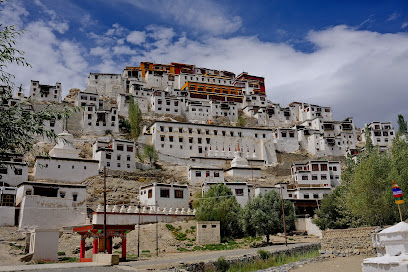
Leh Main Market
Discover the vibrant culture and unique handicrafts at Leh Main Market, the heart of Ladakh's shopping experience.
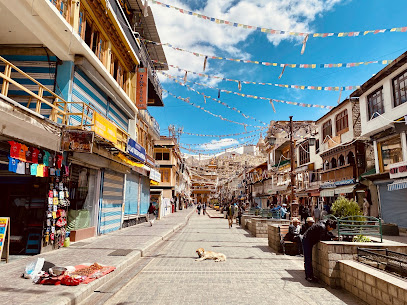
Ladakh Vacation
Explore the breathtaking landscapes, rich culture, and adventure of Ladakh with personalized itineraries from Ladakh Vacation.

Ancient shey palace The Corner Grocery Store Shey
Discover the ancient serenity of Shey Palace in Ladakh, where majestic architecture and breathtaking views await every traveler.

Offside cafe
Discover the charm of Offside Cafe in Ladakh - a perfect blend of local flavors and breathtaking mountain views.

Leh City Market , Ladakh
Explore the vibrant Leh City Market in Ladakh, a cultural hub filled with local crafts, delicious street food, and stunning mountain views.
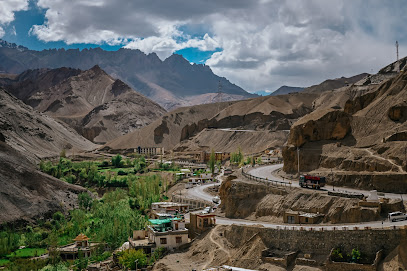
Zorawar Fort
Explore the majestic Zorawar Fort in Leh, India, a historical fortress offering stunning views and rich cultural insights into Ladakh's storied past.

Sangaylay Palace Leh- 3 Star Hotel in leh | Top Rank Hotel in Leh
Discover the serene beauty of Leh at Sangaylay Palace, a charming 3-star hotel offering comfort, local culture, and breathtaking mountain views.

The Bodhi Tree Hotel
Discover serenity and adventure at The Bodhi Tree Hotel, your ideal retreat in the breathtaking landscapes of Ladakh.

Himalayan Bunker
Discover the heart of Leh at the Himalayan Bunker, the ultimate backpacker hostel offering adventure, comfort, and community in the stunning landscapes of Ladakh.

Discover Leh Ladakh
Experience the breathtaking landscapes and rich culture of Leh Ladakh with Discover Leh Ladakh, your ultimate travel guide in this stunning Himalayan region.
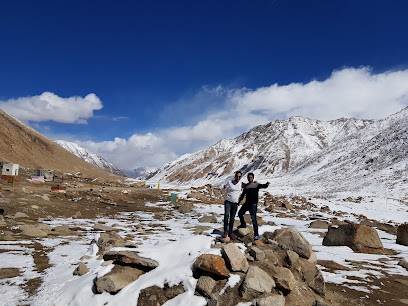
Himalayan Shepherd- Car Rental in Leh Ladakh / Leh Ladakh Tour Packages
Discover the breathtaking landscapes of Leh Ladakh with Himalayan Shepherd Car Rentals, your gateway to adventure in the Himalayas.

Unmissable attractions to see
Hall of Fame, Leh
Explore the Hall of Fame in Leh, a museum dedicated to the valor of the Indian Army, nestled in the breathtaking landscapes of Ladakh.

Shanti Stupa
Discover Shanti Stupa in Leh, a breathtaking Buddhist temple offering stunning views and a serene atmosphere for peace and reflection.

Offside cafe
Discover the charm of Offside Cafe, a serene retreat in Leh, where local flavors meet stunning views of Ladakh's majestic landscapes.

Zorawar Fort
Experience the rich history and stunning views at Zorawar Fort, a must-visit fortress in the heart of Leh, India.

Phyang Monastery
Explore the spiritual haven of Phyang Monastery in Ladakh, where breathtaking views and rich Buddhist culture await every traveler.
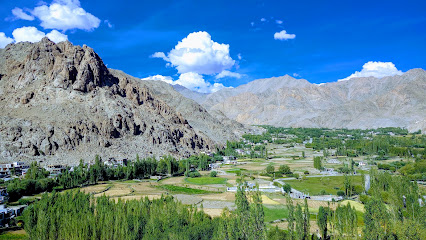
Active Adventures | Best Tour Operators in Ladakh | Travel Agents in Leh, Excursions, & Trekking | Bike Rental in Leh Ladakh
Experience the breathtaking landscapes and rich culture of Ladakh with Active Adventures, your premier tour operator for unforgettable journeys.

Sankar Gompa
Discover the serene beauty and spiritual depth of Sankar Gompa, a captivating monastery in the heart of Leh's stunning landscapes.

Central Asian Museum
Discover the rich cultural heritage of Central Asia at the Central Asian Museum in Leh, showcasing artifacts and stories from an ancient trade route.

Explore Ladakh
Experience the breathtaking landscapes and rich cultural heritage of Ladakh, India's enchanting destination for adventure and tranquility.

Leh City & Glacier Photography Point , South Pullu
Discover the breathtaking views of Leh City & Glacier Photography Point in Ladakh, where nature and culture converge for an unforgettable experience.

Milkha Point ATV bike Ride Nubra Valley
Discover the thrill of ATV biking at Milkha Point in Nubra Valley, where adventure meets stunning natural beauty in Ladakh.

Gompa Soma གོམ་པ་ སོ་མ་
Discover the tranquility and cultural depth at Gompa Soma, a serene Buddhist monastery in the heart of Leh, Jammu and Kashmir.

Gomang Stupa
Experience the spiritual essence of Leh at Gomang Stupa, a tranquil Buddhist temple surrounded by breathtaking Himalayan landscapes.

ZHE Ladakh
Discover the thrill of white-water rafting amidst the breathtaking landscapes of Ladakh at ZHE Ladakh, a top destination for adventure seekers.

Main Buddha Temple
Discover tranquility and cultural richness at the Main Buddha Temple in Leh, a must-visit for travelers seeking spiritual enlightenment.
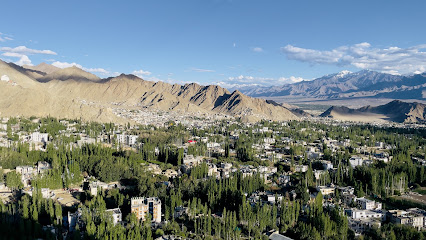
Essential places to dine
The Tibetan Kitchen
Experience authentic Tibetan cuisine in the heart of Leh; indulge in delicious momos and thukpa at The Tibetan Kitchen.

Gesmo Restaurant-Italian Pizza/Indian Food/Western Food/Chinese Food/Special Burger
Savor diverse culinary offerings at Gesmo Restaurant in Leh - from Italian pizza to Indian delicacies amidst stunning Himalayan views.

Lamayuru Restaurant
Discover diverse flavors at Lamayuru Restaurant in Leh: where local warmth meets international cuisine in a cozy setting.

SKY WOK RESTAURANT
Discover the diverse flavors of China, India, Tibet & more at SKY WOK RESTAURANT in Leh—an unforgettable culinary journey awaits!
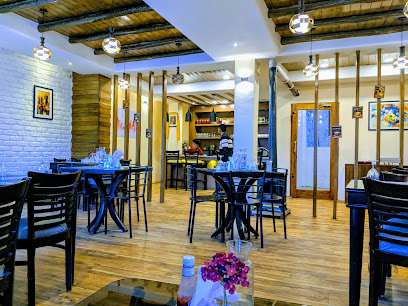
La Piazzetta
Experience the best of Italian and Indian cuisine at La Piazzetta in Leh – where flavors meet breathtaking Himalayan views.
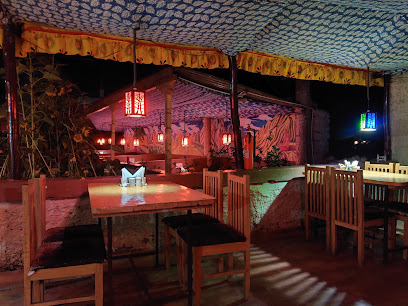
Summer Harvest
Discover authentic Tibetan flavors at Summer Harvest, a delightful fast-food restaurant nestled in scenic Leh, Ladakh.

Salt And Pepper Family Restaurant-Indo European/Family Restaurant
Experience delightful Indo-European cuisine at Salt And Pepper Family Restaurant in Leh, where every meal becomes a cherished memory.

New Wazwan Planet-Top Restaurants In Leh Ladakh|Best Restaurants in Leh Ladakh
Experience authentic Kashmiri cuisine at New Wazwan Planet in Leh Ladakh - a delightful culinary journey awaits every food lover.

LEHVENDA RESTAURANT & CAFE
Discover authentic Ladakhi flavors at Lehvenda Restaurant & Cafe in Leh's Skara Main Market - where culinary tradition meets warm hospitality.

The Grand Wazwan Restaurant- Top 10 restaurants in leh | Best Restaurants in leh
Experience the authentic taste of Kashmiri cuisine at The Grand Wazwan Restaurant in Leh - a culinary journey through tradition and flavor.

HAPPY LEH
Experience authentic Ladakhi cuisine fused with global flavors at Happy Leh - a must-visit dining destination in beautiful Ladakh.

Ladakh Himalayan kitchen
Savor authentic Ladakhi flavors at Ladakh Himalayan Kitchen - a culinary gem in Leh offering traditional dishes amidst stunning mountain views.

Gupp Shupp @ Chai Shai
Experience authentic vegetarian North Indian cuisine amidst the stunning landscapes of Leh at Gupp Shupp @ Chai Shai.

Amigo Korean Restaurant
Discover authentic Korean flavors at Amigo Korean Restaurant in Leh - where every dish tells a story amidst stunning Himalayan views.

Hunger Eye Restaurant - Best Restaurant In Leh Ladakh || Top Restaurant In Leh Ladakh
Experience exquisite dining at Hunger Eye Restaurant in Leh Ladakh - where local flavors meet international cuisine in a cozy setting.

Markets, malls and hidden boutiques
Leh market
Explore the vibrant Leh Market in Ladakh, where shopping meets culture, offering unique handicrafts, delicious local food, and unforgettable experiences.

Zanskar Arts | pashmina-Showroom | Shopping In Ladakh | Himalayan shawl Shops In Leh
Explore authentic Ladakhi handicrafts at Zanskar Arts, a premier souvenir store in Leh, specializing in pashmina shawls, carpets, and unique jewelry.

Druk collections
Explore Druk Collections in Leh, Ladakh, where traditional craftsmanship meets modern style in a vibrant clothing store.
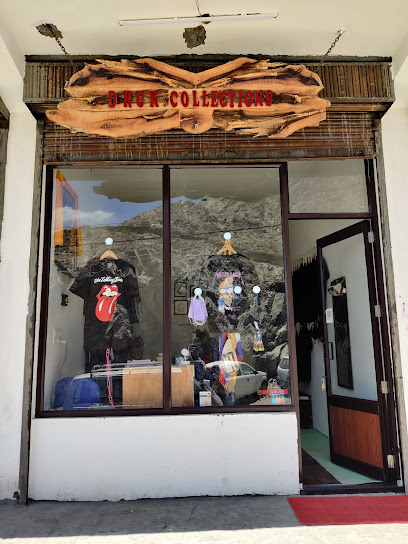
KHAWAJA GALLERY - Handicrafts & Ladakhi Pashmina / kashmiri silk carpet / laDAKHI souvenirs
Discover authentic Ladakhi handicrafts and exquisite pashmina shawls at Khawaja Gallery in Leh, the perfect place to find unique souvenirs.

De Pashmina Emporium
Discover the exquisite craftsmanship of pashmina and unique handicrafts at De Pashmina Emporium, a must-visit destination in Leh Ladakh.
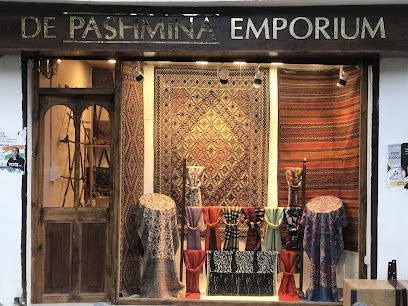
Cottage Emporium- Shopping -Pashmina Shawls- Thangka Paintings In Leh
Explore the Cottage Emporium in Leh for exquisite Pashmina shawls and stunning Thangka paintings, a must-visit for culture and art enthusiasts.

Ximivogue leh ladakh
Explore the rich cultural heritage of Ladakh at Ximivogue, your go-to gift shop for unique souvenirs and artisanal treasures.

Ladakh Palace Pashmina Store
Explore the rich traditions of Ladakh at Ladakh Palace Pashmina Store, where authentic pashmina and exquisite jewelry await.

The Ladakh Art Palace
Explore the exquisite craftsmanship of The Ladakh Art Palace, where unique jewelry and antiques embody the rich cultural heritage of Ladakh.

Firstcry.com Store Leh Main Market
Explore a wide range of children's products at Firstcry.com Store in Leh Main Market, a family-friendly shopping destination in Ladakh.

Ladags Apricot Store
Explore Leh's flavors with organic delights from Ladags Apricot Store, the heart of fresh apricot goodness and local organic produce.

LADAKH PASHMINA SHAWL COLLECTION - Best Shawl Shop/Pashmina Showroom In Leh Ladakh
Explore the finest collection of authentic Ladakh Pashmina shawls, showcasing exquisite craftsmanship and rich cultural heritage in the heart of Leh.

Greetings & Gift Ladakh
Explore the essence of Ladakh through unique handicrafts and souvenirs at Greetings & Gift Ladakh, where culture meets craftsmanship.

Himalayan collection
Explore the exquisite craftsmanship of Ladakhi jewelry and handicrafts at the Himalayan Collection in Leh.

Ladakh Closet
Discover the essence of Ladakhi culture through unique clothing and handicrafts at Ladakh Closet in Leh.

Essential bars & hidden hideouts
SKY WOK RESTAURANT
Discover a delightful fusion of Chinese, Tibetan, and North Indian cuisines at Sky Wok Restaurant in Leh, perfect for every traveler’s palate.

Lehchen Restaurant and Bar
Discover the flavors of Ladakh at Lehchen Restaurant and Bar, where culinary tradition meets vibrant atmosphere in the heart of Leh.

Chopsticks Noodle Bar
Experience the vibrant taste of authentic Asian cuisine at Chopsticks Noodle Bar in Leh, where every dish is a culinary adventure.

The Grand Wazwan Restaurant- Top 10 restaurants in leh | Best Restaurants in leh
Savor the authentic tastes of India at The Grand Wazwan Restaurant in Leh, a must-visit culinary gem for every traveler.

HAPPY LEH
Discover the flavors of Ladakh at Happy Leh, a restaurant that serves authentic cuisine in a cozy, welcoming atmosphere.

Downtown Cafe & Bar
Discover the perfect blend of relaxation and excitement at Downtown Cafe & Bar in Leh, Ladakh, where every sip tells a story.
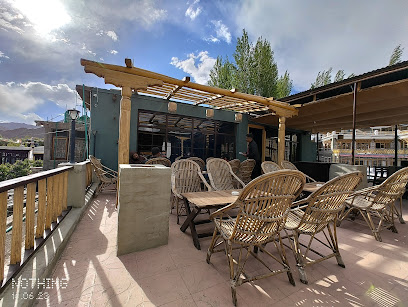
Hunger Eye Restaurant - Best Restaurant In Leh Ladakh || Top Restaurant In Leh Ladakh
Discover the culinary delights of Ladakh at Hunger Eye Restaurant, where authentic flavors meet breathtaking Himalayan views.

Tsas by Dolkhar
Experience the vibrant flavors of Ladakh at Tsas by Dolkhar, a charming bar and restaurant in Leh offering a unique culinary adventure.
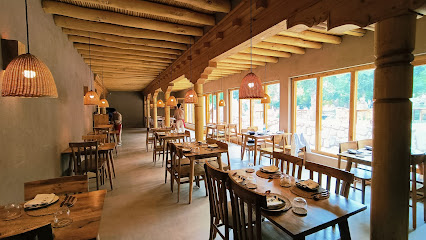
Wanderers Terrace & Cafe - Leh
Experience the flavors and breathtaking views at Wanderers Terrace & Cafe in Leh, a perfect blend of culinary delight and scenic beauty.

Sindh Bar
Sindh Bar: A Culinary Gem in Skalzaling Offering Grilled Delicacies Against the Stunning Backdrop of Jammu and Kashmir.

Cheday Bar and restaurant, Moti market
Experience the vibrant flavors of Ladakh at Cheday Bar and Restaurant in Moti Market, your go-to destination for local and international cuisine.
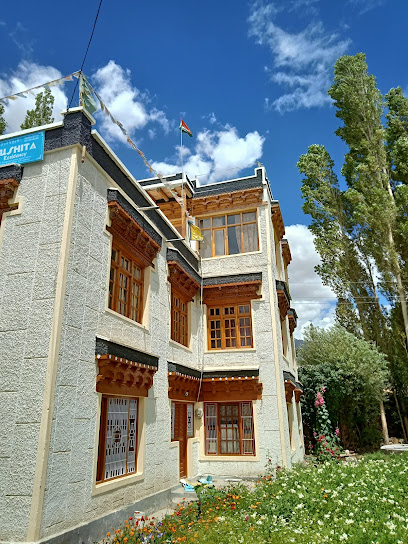
Jah roots bar
Discover the lively Jah Roots Bar in Leh – a perfect blend of local flavors, refreshing drinks, and stunning mountain views.

SHOBLA BAR AND RESTURANT
Discover the vibrant atmosphere and exquisite flavors at Shobla Bar and Restaurant, a top dining destination in Leh, Ladakh.

Ibex Restaurant
Experience the rich flavors of Ladakh at Ibex Restaurant, where local traditions meet contemporary cuisine in a vibrant setting.

THE GREEN LOTUS CAFE & RESTAURANT (LEH LADAKH)
Discover the essence of Ladakhi cuisine at The Green Lotus Cafe & Restaurant in Leh, where every meal is a journey through flavors.

Local Phrases about Leh-Ladakh
-
- HelloJulley
[joo-lay] - GoodbyeChhoo Chhoo
[choo choo] - YesHaan
[haan] - NoNa
[na] - Please/You're welcomeJuley
[joo-lay] - Thank youThukjay chey
[thook-jay chay] - Excuse me/SorryMaafi chus
[maa-fee choos] - How are you?Khamzang khabar?
[kham-zang kha-bar] - Fine. And you?Lajey. Thuk-jay?
[la-jay. thook-jay?] - Do you speak English?Inglish khabar chan?
[ing-lish kha-bar chan] - I don't understandNgaa thop chus
[ngaa thop choos]
- HelloJulley
-
- I'd like to see the menu, pleaseMenu dekhna chus
[menu dekh-na choos] - I don't eat meatGos maas nakh chus
[gos maas nakh choos] - Cheers!Saampe!
[saam-pe] - I would like to pay, pleasePayment karnaa chus
[payment kar-naa choos]
- I'd like to see the menu, pleaseMenu dekhna chus
-
- Help!Madad!
[ma-dad] - Go away!Jaa chu
[ja chuu] - Call the Police!Police laav chus
[police laav choos] - Call a doctor!Doctor laav chus
[doctor laav choos] - I'm lostRasta bhatak gayi
[ras-ta bha-tak gayi] - I'm illChot laga chus
[chot la-ga choos]
- Help!Madad!
-
- I'd like to buy...Khaana chus
[khaa-na choos] - I'm just lookingChhok saar chus
[choke saar choos] - How much is it?Iska dam kya hai?
[is-ka dam kya hai] - That's too expensiveKaley mehenga hai
[ka-lay me-hen-ga hai] - Can you lower the price?Dam ghatana chus?
[dam gha-ta-na choos]
- I'd like to buy...Khaana chus
-
- What time is it?Kati baje hai?
[ka-ti ba-je hai] - It's one o'clockEk baje hai
[ek ba-je hai] - Half past (10)Das baje ke aadhe
[das ba-je ke aa-dhe] - MorningSubah
[su-bah] - AfternoonDopahar
[do-pa-har] - EveningShaam
[shaam] - YesterdayKal
[kal] - TodayAaj
[aaj] - TomorrowKal
[kal] - 1Ek
[ek] - 2Do
[do] - 3Teen
[teen] - 4Char
[char] - 5Paanch
[paanch] - 6Chhah
[chhah] - 7Saat
[saat] - 8Aath
[aath] - 9Nau
[nau] - 10Das
[das]
- What time is it?Kati baje hai?
-
- Where's a/the...?... kahan hai?
[... ka-han hai] - What's the address?Address kya hai?
[address kya hai] - Can you show me (on the map)?Map pe dikhana chus?
[map pe di-kha-na choos] - When's the next (bus)?Agla bus kab hai?
[ag-la bus kab hai] - A ticket (to ....)Ticket (....) ke liye
[ticket (...) ke li-ye]
- Where's a/the...?... kahan hai?
History of Leh-Ladakh
-
The history of Leh-Ladakh dates back to the 10th century when it was established as a part of the Tibetan Empire. The region was ruled by the Namgyal dynasty which played a significant role in consolidating the kingdom and defending it against various invasions. The Namgyal dynasty is credited with constructing many of the monasteries and palaces that still stand today.
-
Buddhism has been deeply ingrained in the culture of Leh-Ladakh since the 2nd century AD, brought by missionaries from Kashmir. The region is dotted with ancient monasteries, known as 'gompas'. Some of the most famous include Hemis Monastery, Thiksey Monastery, and Alchi Monastery. These sacred sites are not only centers of worship but also treasure troves of ancient manuscripts, thangka paintings, and statues.
-
Leh-Ladakh was a crucial part of the ancient Silk Route, which facilitated trade between India, China, and Central Asia. Caravans carrying silk, spices, textiles, and precious stones would pass through Leh, making it a bustling trade hub. This interaction brought a mix of cultures and traditions, enriching the local heritage.
-
In the 19th century, Leh-Ladakh came under the rule of the Dogra dynasty of Jammu. General Zorawar Singh, a general of the Dogra ruler Gulab Singh, annexed Ladakh in 1834. The Dogra rule brought administrative changes and influenced the architecture and culture of the region. However, the local populace faced heavy taxation and had to adapt to new governance.
-
After the partition of India in 1947, Ladakh became a part of the Indian state of Jammu and Kashmir. The region saw military action during the Indo-Pakistani wars of 1947-48 and 1965, and more recently during the Kargil Conflict of 1999. Despite its strategic significance, Leh-Ladakh has maintained its unique cultural identity through these turbulent times.
-
In August 2019, the Indian government restructured the state of Jammu and Kashmir, making Ladakh a separate Union Territory. This administrative change aims to bring more focused development to the region. Today, Leh-Ladakh is a melting pot of ancient traditions and modern influences, attracting tourists from around the world to its stunning landscapes and vibrant culture.
Leh-Ladakh Essentials
-
Leh-Ladakh is accessible via both air and road. The Kushok Bakula Rimpochee Airport in Leh is the main gateway, with flights from major Indian cities like Delhi, Mumbai, and Srinagar. By road, you can take the Leh-Manali Highway, which is open from June to September, or the Leh-Srinagar Highway, accessible from May to October. Both routes offer breathtaking views but require careful planning due to high-altitude conditions.
-
Within Leh-Ladakh, local transportation options include taxis, rented bikes, and buses. Taxis can be hired for day trips or for the duration of your stay. Renting motorcycles or bicycles is popular for adventurous travelers looking to explore independently. Public buses connect Leh to nearby villages, but they are less frequent and may not cover all tourist spots.
-
The official currency is the Indian Rupee (INR). While credit and debit cards are accepted at major hotels and restaurants in Leh, smaller villages and remote areas may only accept cash. ATMs are available in Leh, but it is advisable to carry enough cash for trips to rural areas. Currency exchange services are also available in Leh.
-
Leh-Ladakh is generally a safe destination for tourists. Petty crime is rare, but it is advisable to take standard precautions like safeguarding your belongings and avoiding isolated areas at night. Some remote areas may have restricted access due to military presence, so always check local advisories. Altitude sickness is a common concern; ensure proper acclimatization before engaging in strenuous activities.
-
In case of emergency, dial 100 for police assistance. Leh has a district hospital equipped to handle most medical issues, but for severe cases, you may need to be evacuated to a larger city. Pharmacies are available in Leh for over-the-counter medications. It is highly recommended to have travel insurance that covers medical emergencies and evacuation.
-
Fashion: Do dress in layers due to fluctuating temperatures and wear clothing that covers your arms and legs to respect local customs. Religion: Do remove your shoes before entering religious sites and dress modestly. Public Transport: Do be polite and patient, as local transport can be slow. Don't expect luxury amenities. Greetings: Do greet locals with 'Julley,' a versatile word used for hello, thank you, and goodbye. Eating & Drinking: Do try local dishes like Thukpa and Momos. Don't drink tap water; always opt for bottled or boiled water.
-
To experience Leh-Ladakh like a local, visit the Leh Market for local handicrafts and produce. Attend a traditional Ladakhi festival, such as the Hemis Festival, to witness local culture and traditions. Engage with locals who are often eager to share stories and offer insights into their way of life. A visit to the monasteries like Thiksey and Hemis will provide a deeper understanding of the region's spiritual heritage. For authentic local cuisine, dine at smaller, family-run establishments.
Trending Landmarks in Leh-Ladakh
-
Hall of Fame, Leh
-
Leh Palace
-
Shanti Stupa
-
Thiksey Monastery
-
Leh Main Market
-
Ladakh Vacation
-
Ancient shey palace The Corner Grocery Store Shey
-
Offside cafe
-
Leh City Market , Ladakh
-
Zorawar Fort
-
Sangaylay Palace Leh- 3 Star Hotel in leh | Top Rank Hotel in Leh
-
The Bodhi Tree Hotel
-
Himalayan Bunker
-
Discover Leh Ladakh
-
Himalayan Shepherd- Car Rental in Leh Ladakh / Leh Ladakh Tour Packages
Nearby Cities to Leh-Ladakh
-
Things To Do in Manali
-
Things To Do in Skardu
-
Things To Do in Jammu
-
Things To Do in Sialkot
-
Things To Do in Shimla
-
Things To Do in Gilgit
-
Things To Do in Naran
-
Things To Do in Amritsar
-
Things To Do in Kaghan
-
Things To Do in Gujranwala
-
Things To Do in Murree
-
Things To Do in Abbottabad
-
Things To Do in Lahore
-
Things To Do in Islamabad
-
Things To Do in Rawalpindi













